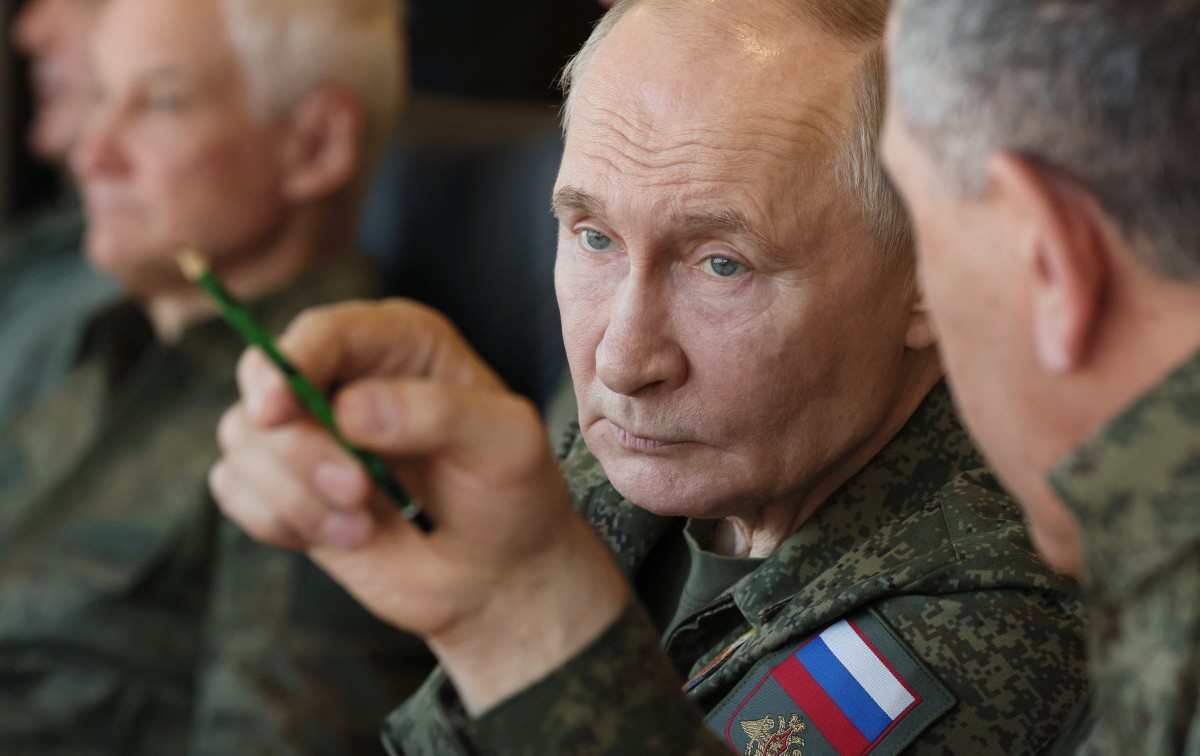The CEO of Ukrainian Railways, Oleksandr Pertsovsky, announced on Saturday that Russia has escalated its airstrike campaign targeting the railway network, aiming to cut off frontline communities as winter approaches.
Pertsovsky also cautioned that Russian drone attacks are growing more accurate, posing greater challenges for Ukraine’s defense efforts.
On the same day, Russian drones struck two passenger trains in Ukraine’s northeastern Sumy region, resulting in one fatality and injuring dozens, as reported by Ukrainian authorities.
“We clearly see the intensification of enemy attacks on the railway infrastructure,” Pertsovsky told reporters, including AFP.
“There is no military purpose whatsoever,” he said.
“The only purpose is to sow panic among people… that the connection will be destroyed and people will be left alone,” he added.
Speaking via video call while on a train to Shostka, the station that was hit, he said there had been “40 major attacks” on railway infrastructure since August, “pretty much every other day”.
Ukrainian President Volodymyr Zelensky called Saturday’s attack, which occurred around 50 kilometres (30 miles) from the Russian border, “savage”.
He posted a video showing a mangled train carriage engulfed in flames with twisted metal and busted windows.
“The Russians could not have been unaware that they were striking civilians,” he said.
Russia’s army has repeatedly targeted Ukraine’s railways since invading in February 2022.
Pertsovsky said there had not been a single week of the war without this occurring.
In April 2022, more than 60 people waiting to evacuate the frontline city of Kramatorsk were killed when a Russian missile crashed into the busy station there.
Pertsovsky expressed particular concern about Russian weapons becoming more precise, saying that without effective air defense, “it’s unfortunately very easy to imagine that a similar attack could bring way, way worse results.”
“They have very precise Shaheds (Iranian-designed drones) that are targeting individual locomotives; they are also able to target energy infrastructure very effectively, making many of the tools that were used for protection ineffective at the moment,” he said.
Russia has also stepped up its attacks on Ukraine’s energy infrastructure as the weather chills.
Moscow earlier this week launched its largest-ever strike on Ukraine’s gas infrastructure, while strikes on Saturday cut off power to some 50,000 households in the northern Chernigiv region.

Russia’s Sochi Grapples With Ukrainian Drones
Internet blackouts have become a fact of daily life in the Russian city of Sochi, which is coming under increasing threat of retaliatory Ukrainian drone strikes.
Russia’s authorities have tried to shield their citizens from the fallout of Moscow’s offensive on Ukraine, launched in 2022, but as Kyiv ups its own long-range drone attacks on Russian territory, disruptions to daily life have become more and more frequent.
“The last few months have been difficult. We are being constantly disconnected. Usually, during the night and morning, there are alerts about drones,” Nadezhda Gorshanova, a 23-year-old sports coach from the city, told AFP.
Ukrainian President Volodymyr Zelensky has vowed to increasingly target Russian energy and military sites — a bid to cut off Moscow’s vital energy revenues and a response to more than three years of near-daily attacks by the Russian army.
Under almost constant fire, millions of Ukrainians have been forced to leave their homes in the south and east, and tens of thousands have been killed.
Air raids blare out daily across the country, including in the capital Kyiv — forcing exhausted residents to either scramble to the nearest metro station or air shelter for cover, or risk the increasing likelihood of a drone or missile hit.
For most of the war, Russians have not had to face that kind of daily reality.
Beyond border regions, there are few air alerts.
But as the war grinds through its fourth year and with Ukraine having launched multiple successful strikes deep behind the front, that is now changing.
Temporary airport closures are common, disrupting flights and occasionally causing transport chaos.
Mobile internet is also frequently turned off — an attempt to disrupt the drones’ flight paths.
“Usually, the internet is turned off between 10:00 to 11:00 pm and 7:00 am but if there is a major drone threat, then it is kept off for longer,” Gorshanova told AFP.
“And then there are problems when you are commuting to work in the morning, by taxi or public transport,” she added.
Helos & Drones
Sitting on Russia’s Black Sea coast, the resort city of Sochi has long been a favoured summer escape for the Russian elite, including President Vladimir Putin.
The city and surrounding mountains hosted the 2014 Winter Olympics, as well as the 2018 FIFA World Cup games.
At the airport arrivals hall, a painting now shows a military plane flying over a field of flowers.
When Putin visited the city earlier this week, the internet was cut off for almost the entirety of his stay amid reports of Ukrainian drones in the area.
Although some tourists have been “scared” away, according to Gorshanova, Russians have largely continued flocking to the area.
Sunbathing on the beach with his wife and mother-in-law, Sergei Kamenyuk told AFP he didn’t mind the disruption.
“Yes, the internet is disconnected. But on the contrary, it’s good. No one can reach you and you can’t reach anybody either, so you just relax,” the 28-year-old, wearing a large gold orthodox cross and bright trunks, told AFP.
“The only thing that causes some concern is the helicopters overhead, various drones,” he added.
“It’s a bit unusual.”
© Agence France-Presse




